15 Best Sales Pitch Examples [+ Tips and Templates]
Melissa Williams
When it comes to sales pitch examples and persuading anyone about anything, a dichotomy holds true:
You want (or believe) one thing; they want or believe another thing.
The easiest way to get from Point A to B is to connect the dots.
You find your audience’s point of view (POV) and connect to their values or needs.
Below are 15 sales pitch examples that show you tactical strategies and sales techniques to do it the right way.
Here’s what we’ll cover:
- What Is a Sales Pitch?
- Types of Sales Pitches
- 15 Sales Pitch Examples
- Sales Pitch Tips
- Sales Pitch Template
What Is a Sales Pitch? 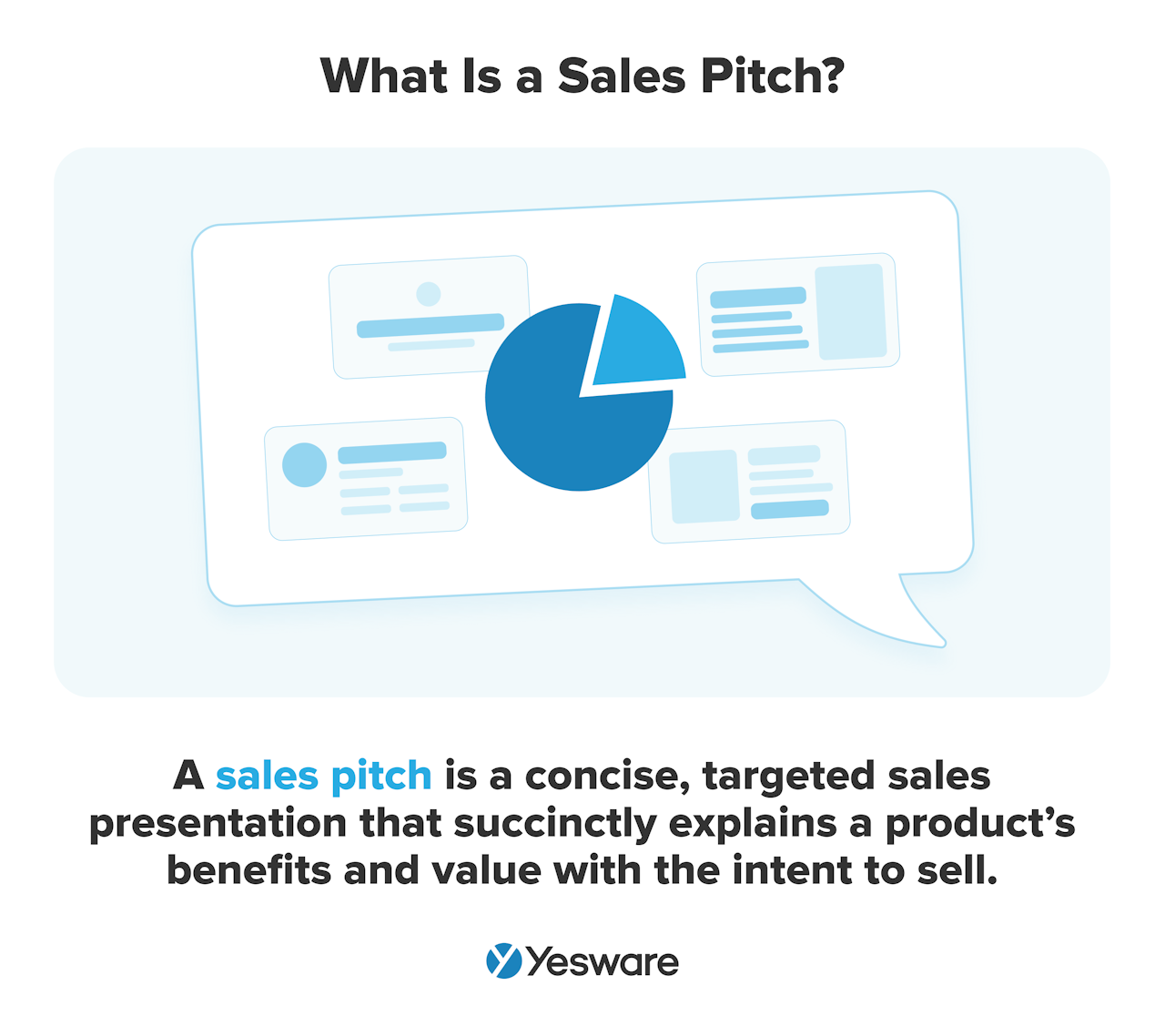
A sales pitch is a concise, targeted sales presentation that succinctly explains the following aspects of an offer:
- The product’s/service’s features and benefits
- Unique value proposition/unique selling proposition (USP)
- Data to back up your claims
Really great sales pitches also sometimes manage to make subtle references to more nuanced company information, like a mission statement, brand values, and more.
Sales pitches vary in length depending on their format, the specifics of your offer, and the needs of your market.
That being said, they’re definitely meant to be short — usually only a couple of minutes or less. That’s why a sales pitch is also sometimes referred to as an “elevator pitch.” The idea is that you should be able to deliver the entire spiel in the time it takes to share an elevator ride with someone.
Because time isn’t usually on a sales rep’s side when they’re pitching, they need to make sure the content and delivery are extremely compelling.
To that end, it’s also important that the purpose of a pitch isn’t to sell the product immediately after the pitch. Instead, aim for baby steps; a more appropriate goal of a sales pitch would be to have to prospect book another meeting, sign up for a webinar, or commit to a demo.
Types of Sales Pitches
Sales reps have a lot of flexibility when it comes to pitching. There are several formats and delivery options available to suit the needs of any product, rep, or target market.
Here are some of the most common types of sales pitches. 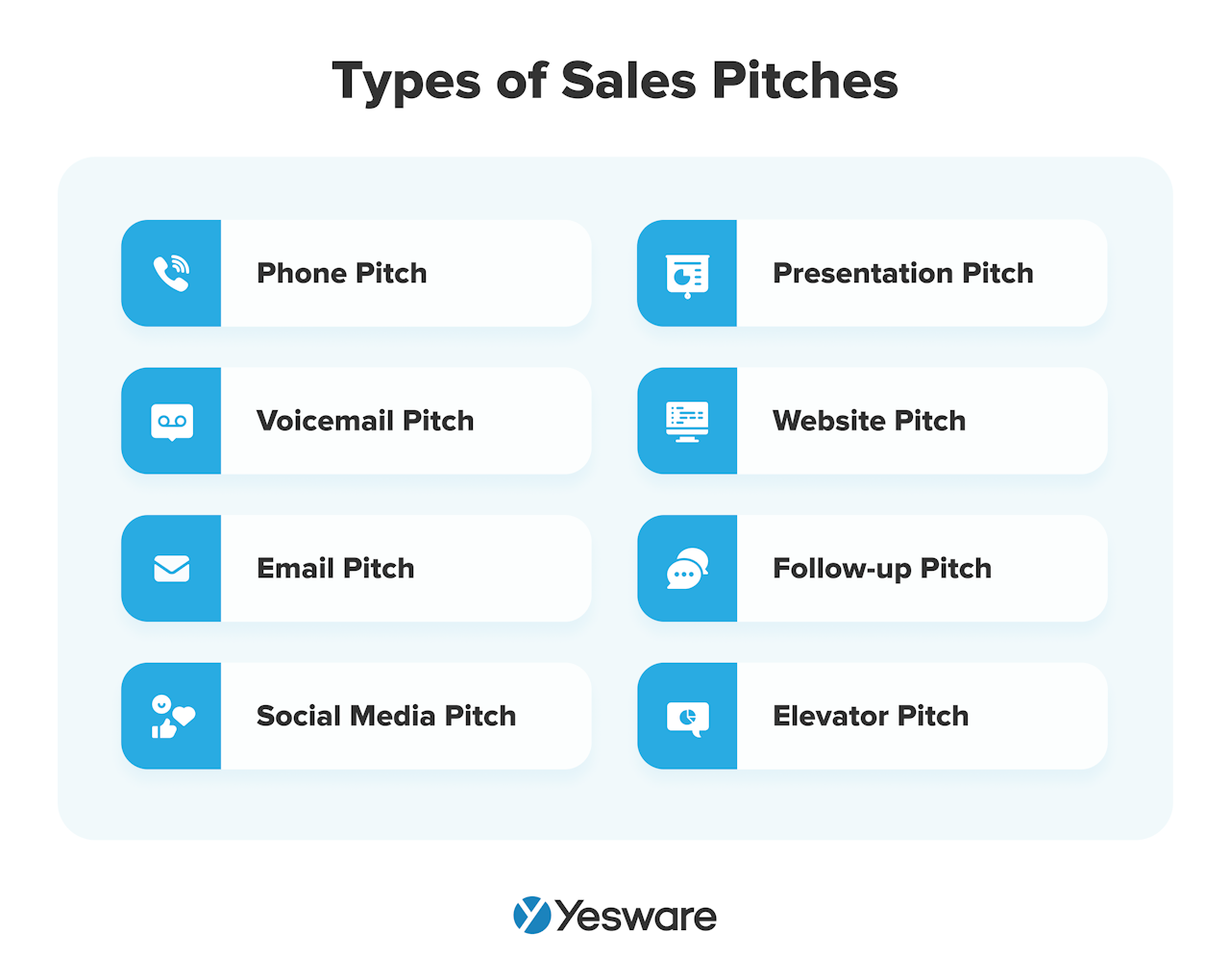
Phone Sales Pitch
Though cold calling (and, these days, phone calling in general) gets a bad reputation, it can actually be a surprisingly effective approach for a sales pitch.
One of the advantages of a phone pitch is that it happens live, in real-time, so sales reps can gauge the prospects’ response and adjust their tactics accordingly.
Phone sales pitches also make it easy for sales reps to show how much they’ve done their research as they deliver a highly personalized, value-driven offer.
Pitching over the phone can also provide a natural segue into initiating an email conversation.
Voicemail Sales Pitch
If you’re going to practice phone sales pitching, you’ll also want to master your voicemail sales pitch.
With about 80% of all calls going to voicemail, chances are high that phone-based reps will need to rehearse exactly what they’re going to say when they hear that beep.
And with so little time in the day (and the depressing statistic that only 5% of voicemails ever get returned), your voicemail sales pitch needs to be intriguing enough that it compels the prospect to give you the time of day, listen to the message, and call you back.
Email Sales Pitch
The email sales pitch is a great tactic for sales teams that need to pitch to a large number of prospects. Reps who use this format get the benefit of being able to pitch to prospects anywhere, at any time.
Email sales pitches are easy to track and A/B test. 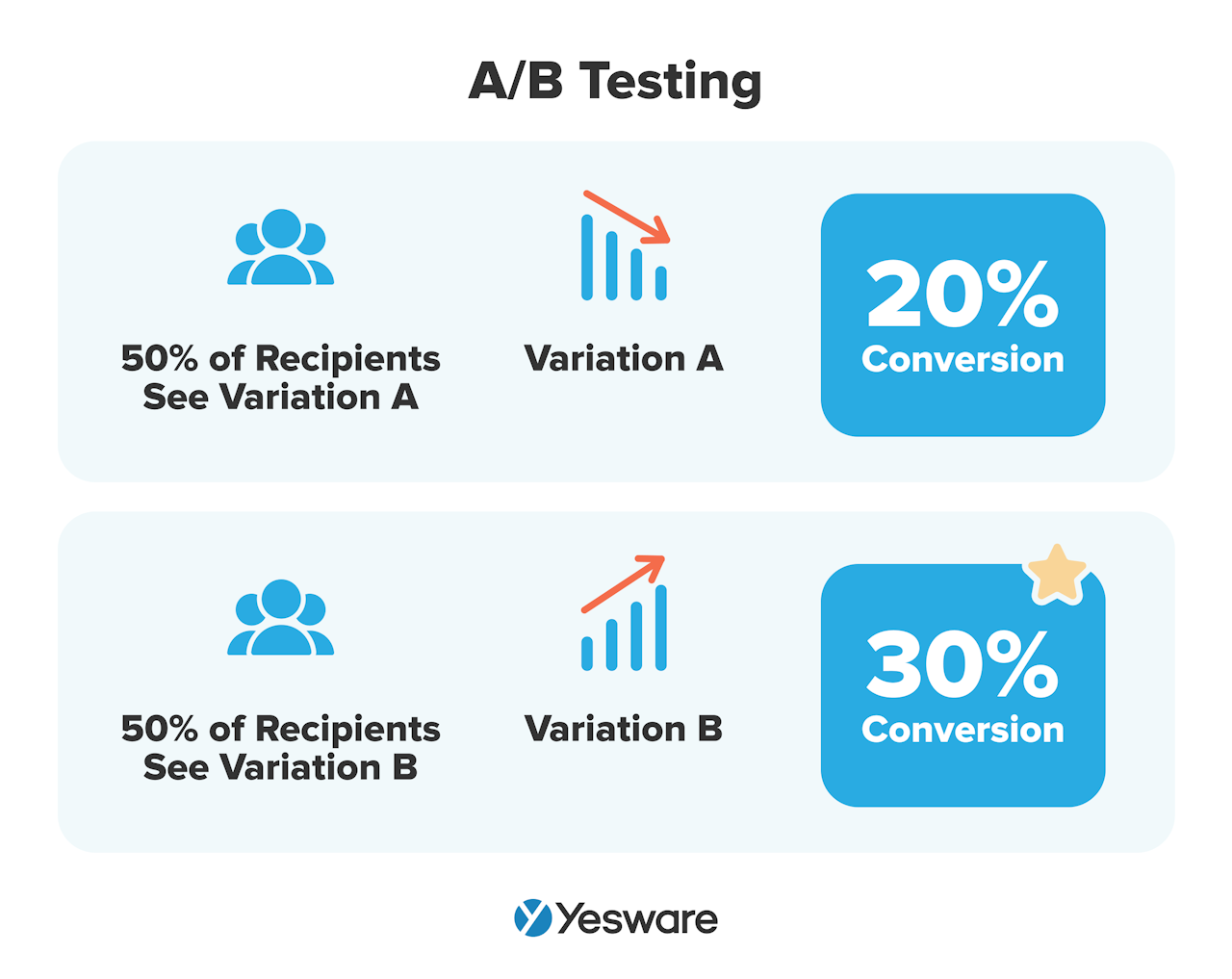 Once your A/B testing helps your team identify winning email sales pitch frameworks, the team can save those templates and re-use them again and again.
Once your A/B testing helps your team identify winning email sales pitch frameworks, the team can save those templates and re-use them again and again.
Still, for all of its conveniences, email sales pitching comes with its own set of challenges.
Standing out in a prospect’s inbox, for example, is no easy feat. People receive over 100 business emails per day, so reps need to know how to cut to the chase immediately (bullet points are great for this). Even the subject line can become make-or-break for some messages.
The best way to use an email sales pitch is to focus on one or two primary points, and stick to them throughout. Remember, your main goal is to initiate further conversation; you can pick up where your email left off the next time you speak.
Social Media Pitch
A social media pitch is also sometimes called social selling and is one of the most popular ways for sales teams to market and sell their product or service. 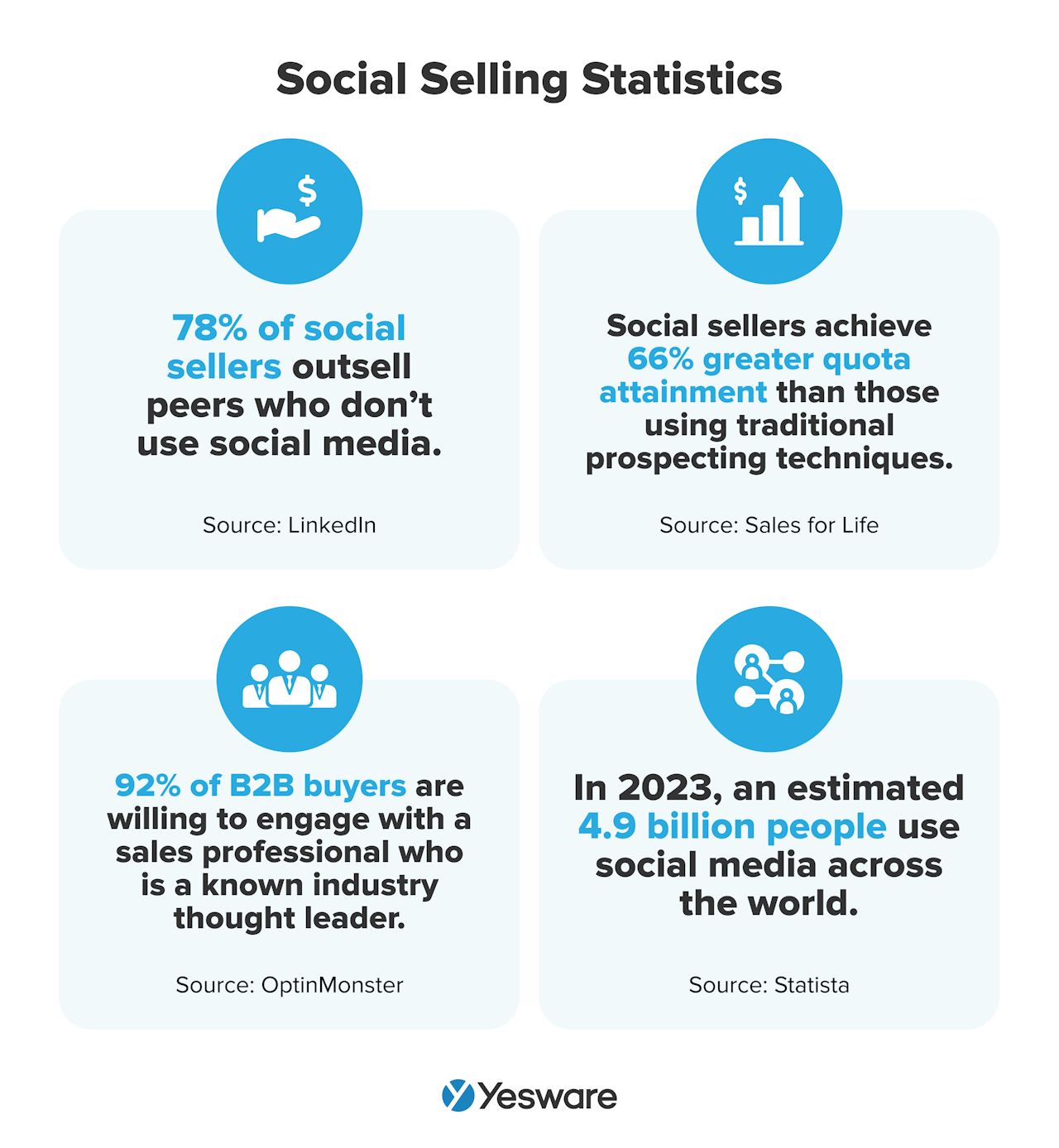 When it comes to social media pitching, try to stay away from trends. New platforms, hashtags, and filters come and go, and the truth of the matter is that no sales rep has the time to try to keep up with what’s in or out on any given day.
When it comes to social media pitching, try to stay away from trends. New platforms, hashtags, and filters come and go, and the truth of the matter is that no sales rep has the time to try to keep up with what’s in or out on any given day.
Instead, look for ways to use social media that will hold up as timeless.
Social media pitching is great for increasing brand awareness and establishing credibility. It allows sales reps and prospects to engage in a casual, easy way that helps build rapport and trust.
Presentation Sales Pitch
The terms “sales pitch” and “sales presentation” are sometimes conflated. And for casual purposes, that’s mostly fine.
But in technical terms, a presentation sales pitch is one that includes a sales deck.
The sales deck is the presentation component — a visual supplement (including images, copy, graphics, charts, etc.) that improves your pitch. Tools like PowerPoint, Google Slides, and Keynote can help sales reps of any experience level create sales decks for presentations.
Over 90% of the information that’s transmitted to the brain is visual, so having the ability to present with visual aids is a huge advantage.

For a really polished presentation, email and/or print a PDF copy of the sales deck for the prospect, so they can review it on their own time and share it with other relevant decision-makers.
Website Sales Pitch
Some sales teams use their company website to help them make their pitch.
A website sales pitch includes any strategic messaging and/or content placed on the page that’s designed to capture prospects’ attention and encourage them to take the next action (e.g., fill out a form, call a sales rep, etc.).
One of the biggest advantages of using the website to assist the sales pitch is that this format can be very effective at showcasing your brand values without coming across as too sales-y.
Follow-Up Sales Pitch
With over 80% of sales requiring at least four follow-ups, the follow-up sales pitch is another non-negotiable for every sales rep’s toolbelt. 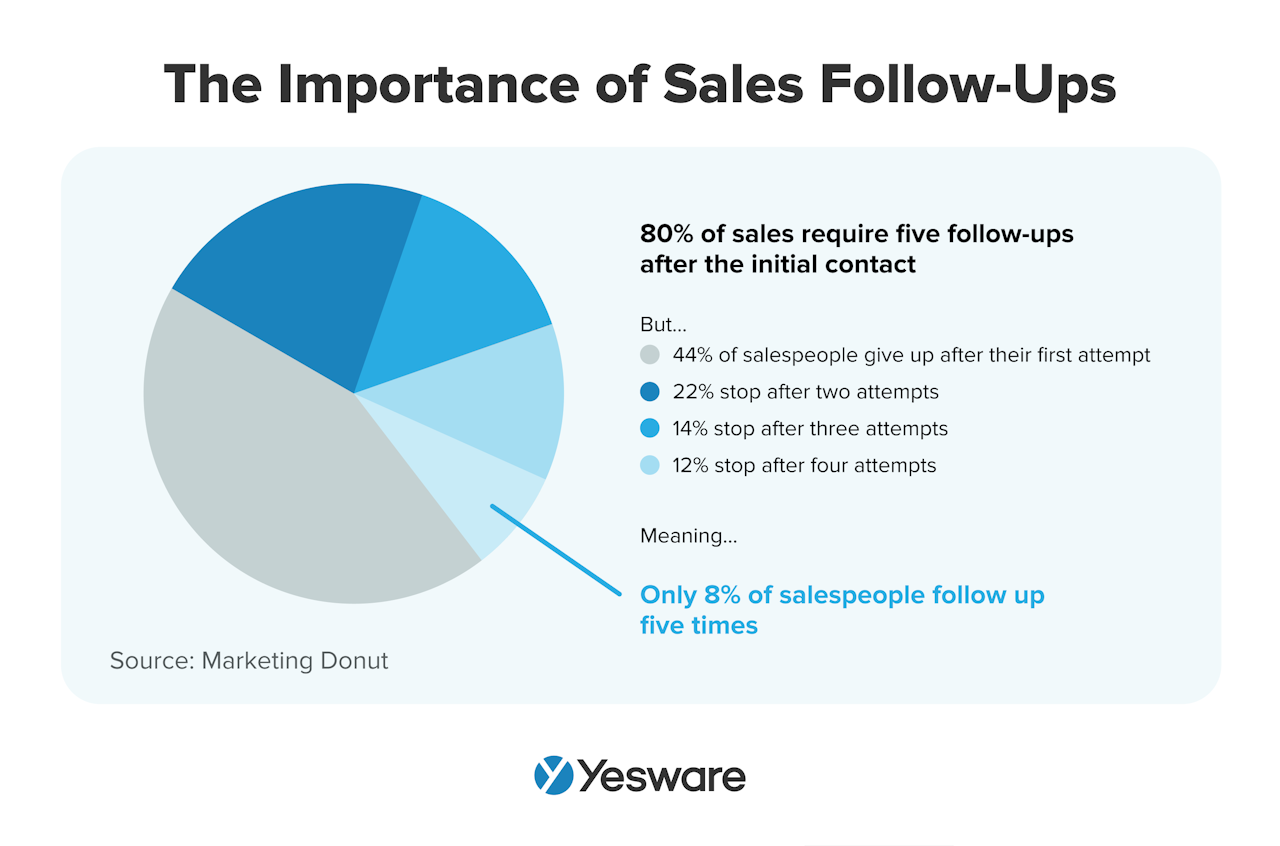 A follow-up sales pitch can take a variety of formats, including phone, email, or social media outreach. The purpose of the follow-up sales pitch is to nurture the prospect, educate them further as needed, and make yourself available to discuss any concerns or objections.
A follow-up sales pitch can take a variety of formats, including phone, email, or social media outreach. The purpose of the follow-up sales pitch is to nurture the prospect, educate them further as needed, and make yourself available to discuss any concerns or objections.
Elevator Pitch
“Elevator pitch” is the long-standing nickname for a sales pitch, and is named for the way salespeople need to pitch — quickly! Reps can get into the right mindset for an elevator pitch by imagining that they need to get their points across by the time the listener arrives to their floor.
This is one of the shortest types of sales pitches, usually clocking in at 60 seconds or less. Be quick, be honest, and be friendly. The elevator pitch exists to make connections and is an invitation to learn more — don’t make it more complicated than that.
Here’s an example of a generic elevator pitch template: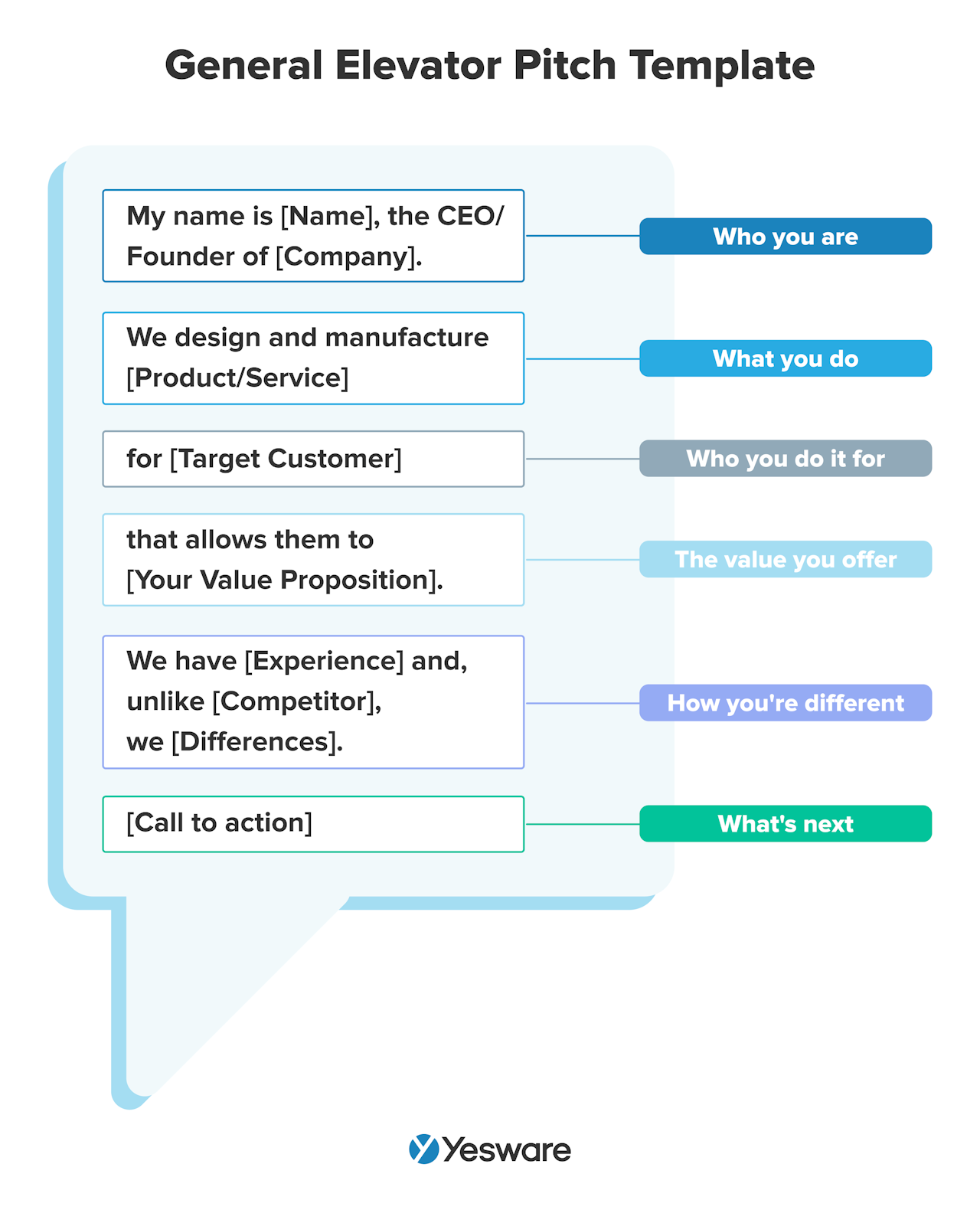
15 Sales Pitch Examples
Sales Pitch Example #1: The Elevator Pitch
In today’s day and age where everyone is on the go, the elevator pitch is a necessity. People simply don’t have the bandwidth for a full-length presentation — especially when they’re only just exploring their options.
>>Example: Check out this example in which a G2 rep pitches his product with authenticity and enthusiasm in under 20 seconds.
Social proof (i.e. data from case studies, quotes from testimonials, etc.) is one of the most powerful things you can include in a sales pitch.
Just make sure you find a balance between sharing what other people think versus sharing what you can do specifically for that prospect’s unique challenges.
Sales Pitch Example #2: The Product Demonstration
Sometimes, there’s really nothing like the real deal to get the prospect hooked. A live product demonstration can be incredibly compelling.
>>Example: Check out the way the founder of Scrub Daddy scrubbed his way into three different Sharks’ hearts (who ended up arguing for the right to work with him!) and earned his company a lucrative investment.
Watching this video, there’s no denying that the product works. The interested Sharks have absolutely no skepticism about the product or its claims; in fact, the best-fit Shark is actually excited to give him the money — all because his product demo spoke for itself.
Sales Pitch Example #3: The Pain Point Pitch
Here’s another Shark Tank example, and the entrepreneur in this pitch knows exactly how to dig into his market’s pain points: by talking about their children.
It’s clear by their body language here that every Shark — even those who are too old, at this point, to have kids in daycare — knows exactly the struggle that Mr. Brightwheel describes in his introduction.
The universal frustration faced by teachers and parents alike is so poignant that all he needs to do is describe it for a minute or two, and it brings even empty-nest parents right back to those chaotic early years.
Sales Pitch Example #4: The Two-Sentence Pitch
The Two-Sentence Pitch (also sometimes called the 12-second pitch) has a very specific framework.
First sentence: Complete (but brief!) summary of what your company does.
Second sentence: What sets your company apart from competitors.
That’s it! This structure is helpful for beginning conversations with investors. It’s also sometimes used as the introduction for a slightly longer elevator pitch.
>> Example: Here’s the two-sentence pitch in action.
Yesware is a sales engagement platform that helps sales reps increase productivity, improve engagement with prospects, and guide team-wide data-driven decisions. We integrate with Gmail, Outlook, and Salesforce in under 60 seconds, giving reps access to data directly in their inbox.
This pitch is short enough that the specific language and other components can easily be A/B tested to find the perfect combination of words, gestures, pauses, etc.
Sales Pitch Example #5: Don’t You Agree?
This presentation pitch example is a bait-and-switch approach that leaves your audience agreeing with you.
Here’s how it works:
- Start with an undeniable truth.
- Make a bold claim that contrasts it. One that should stir up some furrowed brows.
- Why they should agree + Solution.
>> Example: Here is a set of slides by Drift that does this well. The breakdown of the pitch:
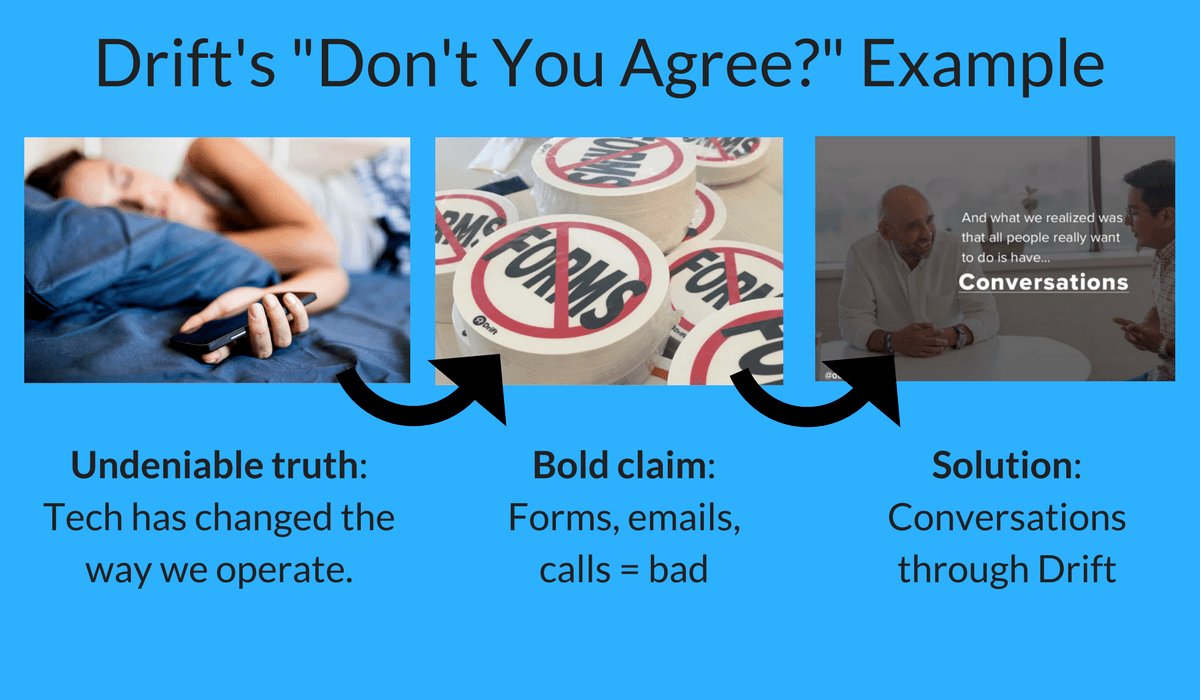
Truth: Tech has taken over our lives.
Bold claim: Forms, emails, and calls are the enemy. (Keep in mind that this is being pitched to marketers and salespeople, who rely on these channels for leads and customer communication.)
Why + Solution: Tech makes us treat humans like faceless leads. We should be focusing on creating real conversation and solving needs. Meet Drift.
The beauty of this approach is it makes us think differently. Deep down, we all want to push our teams ahead. Doing so requires innovation and change. Your pitch introduces a new line of thinking that helps your audience become a change agent for their team.
Want more? Here are 7 of the best sales presentation slides from companies like Facebook, Uber, and LinkedIn.
Sales Pitch Example #6: Start With a Story, Segue Into Your Pitch
Storytelling captivates us as an adult just as much as it did when we were a child.
Our brains literally react to them. Stories trigger the release of a trust hormone called Oxytocin. When storytelling in a sales pitch, this chemical reaction promotes connection and empathy.
>> Example: See this story by Amy Cuddy. (The pitch here is that we really can fake it until we make it; our body language informs our perception of ourselves and others’ perceptions of us, thereby shaping our outcomes.)
Here are the details to include in your story (with the speaker’s filled out as an example):
Who: Amy
What: A car accident threw her from the car, dropped her IQ, and took her out of college.
When: Age nineteen
Why it matters: Amy overcame the odds by faking it until she made it. She realized that adjusting her body language shaped her mind, her behaviors, and her outcomes.
Pro Tip: Keep your story short. You should hit on all of the details above in less than 2 minutes. Here’s an example of what not to do: a seventeen-minute story by LEGO®.
Sales Pitch Example #7: Start With a Stat
Sharing data during a sales pitch is a surefire way to demonstrate your credibility. It shows that you’ve done your research and that you understand how their problem affects them in a very tangible way.
How it works: Start your pitch with a statistic that highlights the problem the prospect faces.
>>Example: Let’s imagine your sales team sells onboarding software for new hires. Your product is designed to cut down on wasted time training new employees and reduce employee turnover.
Did you know that disengaged or poorly-trained employees actually cost companies money? Employees with low engagement cost their organizations approximately 18% of their salary. And that’s not to mention the fact that it costs anywhere from $7,500 to $28,000 (or more) to hire and onboard a new employee.
This is an effective intro, or “hook,” because it immediately gets the prospect thinking about their own budget and bottom line, and how to avoid the consequences mentioned in the statistics.
 Sales Engagement Data Trends from 3+ Million Sales ActivitiesLooking at millions of tracked email activity over the past few years, this ebook is filled with our top studies and findings to help sales teams accelerate results.
Sales Engagement Data Trends from 3+ Million Sales ActivitiesLooking at millions of tracked email activity over the past few years, this ebook is filled with our top studies and findings to help sales teams accelerate results.
Sales Pitch Example #8: The Demo Principle
What do late-night infomercials, Costco samples, and magicians have in common?
They show you what they’re pitching firsthand.
The theory here is that the cost of time and resources it takes to give a demo is worth it, because the net profit from sales outweighs the net profit of sales without a demo.
How to do it: List out a table with two columns: bells and whistles go on the left; the end benefits go on the right. Cross out the bells and whistles; demo and sell the end benefits.
>> Example: Watch this carrot slicer show passersby about an easy peeling experience. Notice how little he talks about features of the peeler, because you can see them for yourself.
Sales Pitch Example #9: Give Perspective Based on Your Audience
When you’re pitching, you know the thing you’re trying to sell like the back of your hand.
But you need to know your audience like that, too.
It’s the key that helps bring their point of view to yours. And it’s one of the most easily overlooked secrets behind a successful sales pitch.
Most pitches make the classic mistake of jumping right into selling.
How to do it right on your own: Ask your customers to pick their brain. Why did they choose you? What benefits were they excited to see? Why do they keep coming back? Lead with that.
>> Example: Watch Mark Cuban explain what he did when he was faced with selling Mavs tickets when they were the worst team in the league. (Start the video at 1:01.) He reframes the game experience as a way for parents to create lasting memories with their children — memories like the ones they still have with their own parents.
Sales Pitch Example #10: Use Emotional Appeal
Another thing that works in Mark Cuban’s pitch is that he uses nostalgia.
Triggering someone’s emotion drives them to act.
Think about it: It’s why panhandling works: it sparks sympathy, which compels us to give.
How to do it on your own: Identify your audience’s business and/or personal values. Show how your pitch relates to their own values. (Yesware, for instance, relates to its users by being built to save them time and increase their productivity every day.)
>>Example: See this Shark Tank pitch, where a company founder gets two sharks tearing up by getting them to commiserate with the risks of starting a new company.
Using content in your pitch that strikes an emotional chord is one of 7 proven sales techniques to close a deal and get to “yes.”
Sales Pitch Example #11: Educate and Inspire
The way we grow in life, love, and our careers is by learning.
On the flip side of that, one way to help others to grow is to educate. And not in a way where you push your opinions. You need to lay the groundwork with facts they don’t know.
How to do it yourself: Use specificity. It’s a persuasive technique to make your points more believable.
>>Example: Here is a video pitch from CharityWater.
It lays out these important facts:
- Some people have to walk 4 hours a day to get access to drinking water, and even then it is contaminated with dysentery and cholera.
- Drinking dirty water each year kills more people than intense violence like war.
- The water crisis is solvable. There is enough water in the world.
Sales Pitch Example #12: Use the Pique Technique
What was the first thing you did when you woke up this morning?
It’s the opening line of the video example above, and it captures viewers.
The thing is, when you’re selling to someone who doesn’t want to be sold to, jumping into a standard pitch is a fast turnoff.
The Pique Technique is where you make an odd request or ask a question that leaves your audience wanting to know more. They wonder why you’re asking, and that keeps them focused.
How to do it yourself: Make a small request of your audience, or ask them a question that’s easy to answer but leaves them wondering why you’re asking in the first place.
>> Example:
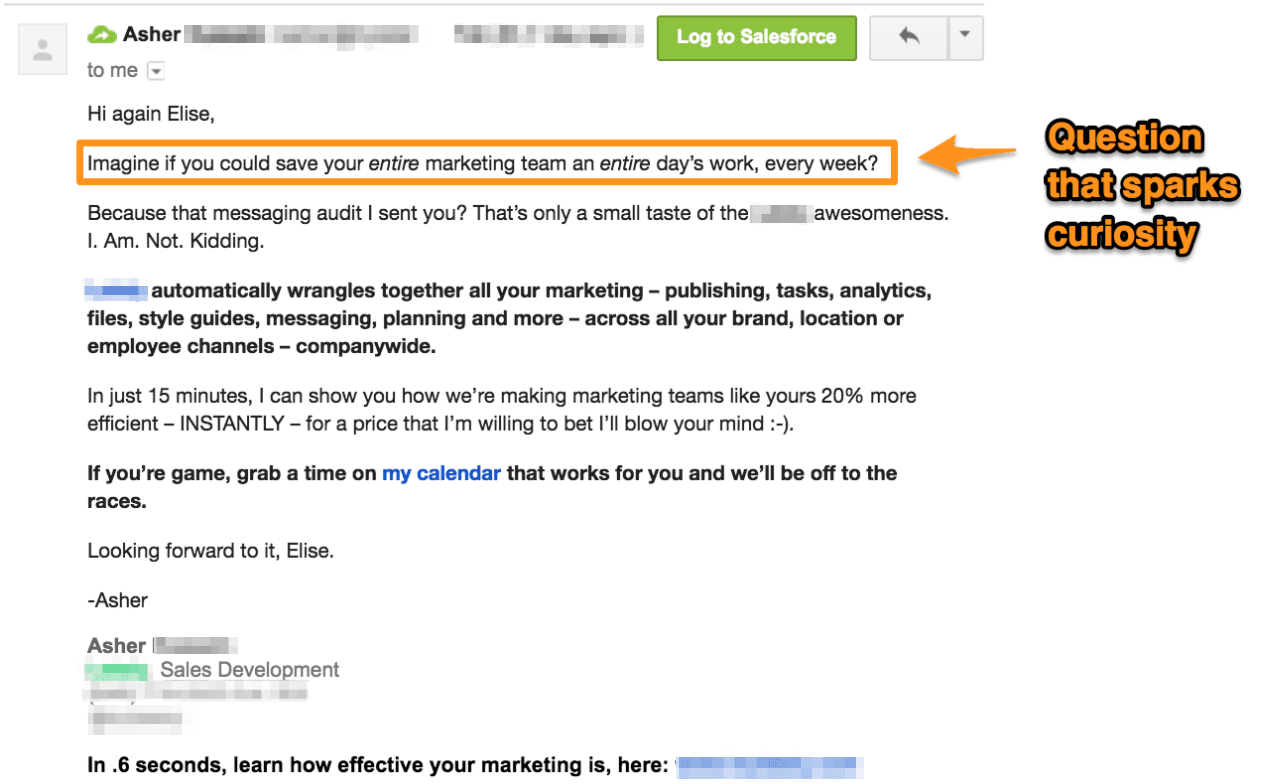
Sales Pitch Example #13: Paint Them a Picture
You think what you’re pitching is great, right? Well, the best way to show your audience this is to give them your POV.
How to do this: Think of the end effect of whatever you’re pitching. What does it feel like? Use a metaphor to explain it to your audience. You’ll need three or more points of similarity between the thing you’re pitching and the thing you’re comparing it to.
Because this can be tricky, here are two examples:
>>Example 1: Joe MacMillan compares the first web browser to driving through the Holland Tunnel:
Points of similarity:
- Possibility to be able to go anywhere
- Excitement of what is to come
- The anticipation of everything being laid out before you
>>Example 2: Don Draper pitches a slide projector wheel by describing it as a time machine:
Points of similarity:
- Goes backward and forwards
- Takes us to a place where we ache to go again
- Lets us travel to a place where you know you’re loved
As Don Draper says, this technique helps your audience to create a sentimental bond with whatever it is you’re pitching.
Sales Pitch Example #14: Use Flattery
We all have some level of self-doubt.
Which is why flattery is so effective.
It replaces our self-doubt with self-esteem. This subconscious effect holds true even when the offeror has an ulterior motive and the person you’re complimenting sees your ulterior motive.
>> Example:
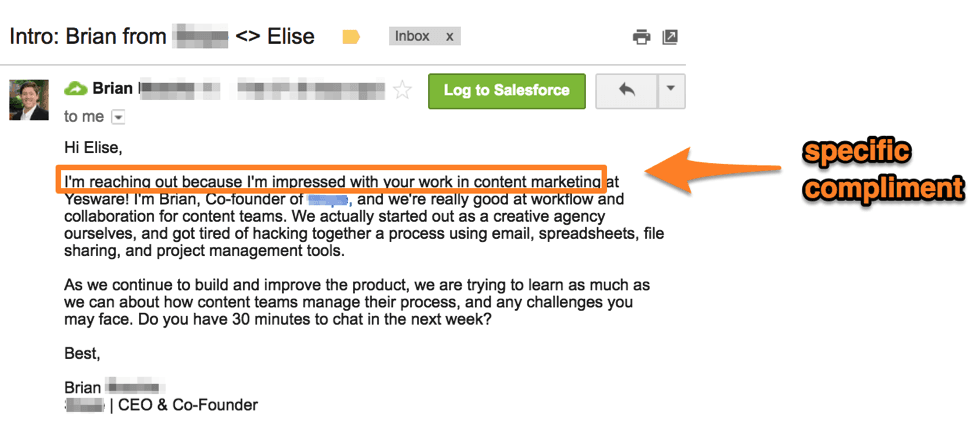
Check out 5 more email examples of personal selling in action.
Sales Pitch Example #15: Show Them That Their Time > Your Time
This one makes you stand out because 98% of sales pitches make a valiant assumption.
One that ruins their shot — despite the effort put into writing and setting up the nurture.
They assume is that their time is more valuable than their prospects.
The mindset is “I put in 1 minute of research, so I’m warranted to ask for 15-30 of yours.”
Because “I think this is a really good fit.”
Who cares? The trash can.
Instead, show them you spent more time researching than you’re asking for.
>> Example: See the example below. First, Asher runs an audit to pitch. Then, he reaches out through LinkedIn Messaging and email to send me the audit directly.
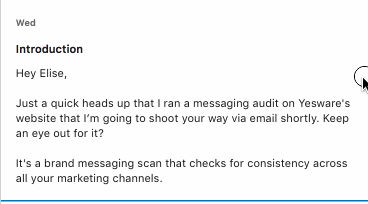
Within the same hour, I then received this with the audit attached:
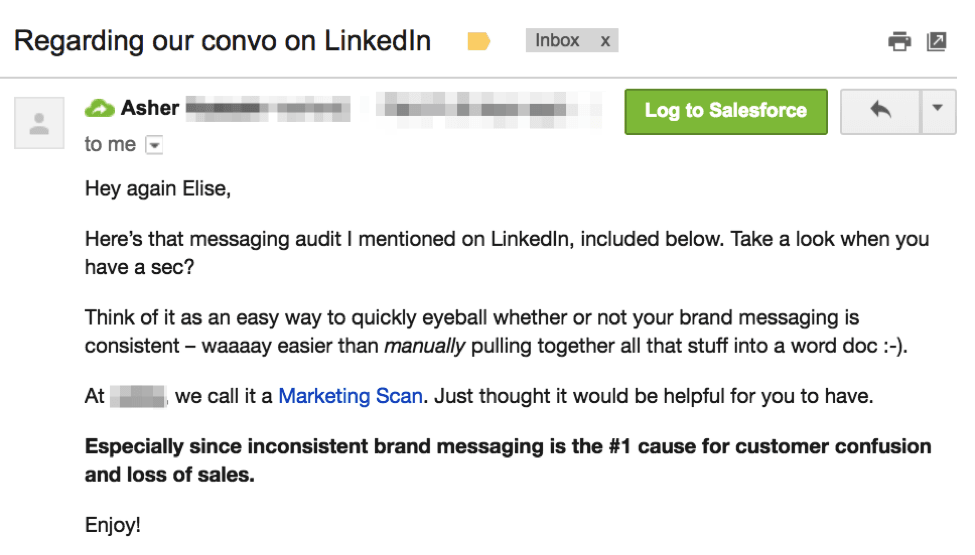
Sales Pitch Tips
Keep the following tips in mind as you practice and perfect your sales pitch.
Research…a Lot
As fast-moving as most sales pitches are, they require a tremendous amount of research ahead of time.
For a sales pitch to be effective, the rep who’s delivering it needs to be on top of everything from product knowledge to customer knowledge, to market trends and predictions.
Solid sales pitch research means understanding:
- The prospect’s pain points, needs, challenges, and preferences
- The appropriate channel for distributing the pitch
- The decision-makers at the prospect’s company, and how to reach them
- Which questions and/or objections may be presented during the pitch
The more thorough your research, the more personalized your pitch will be.
Make a Connection
Although it’s hard to measure, a lot of your success with sales pitching will come down to how well you make your first impression.
Avoid the temptation to launch directly into your pitch content, no matter how limited your time.
Instead, be the leader in building rapport. Make an effort to make a connection, and (of course) always remember to pitch with honesty and integrity.
Start With a Strong Opening
You only have a few minutes to pitch, so the first few seconds are key. The opening of your pitch (sometimes called “the hook”) is one of the most important parts to master.
To add curiosity and engagement to this section, consider starting by asking a question or sharing a relevant statistic.
Work on Your Messaging
Regardless of the format of your pitch, always ensure that your brand messaging and value proposition are communicated clearly.
Your prospect should be able to easily identify your unique selling point (USP) after the pitch. 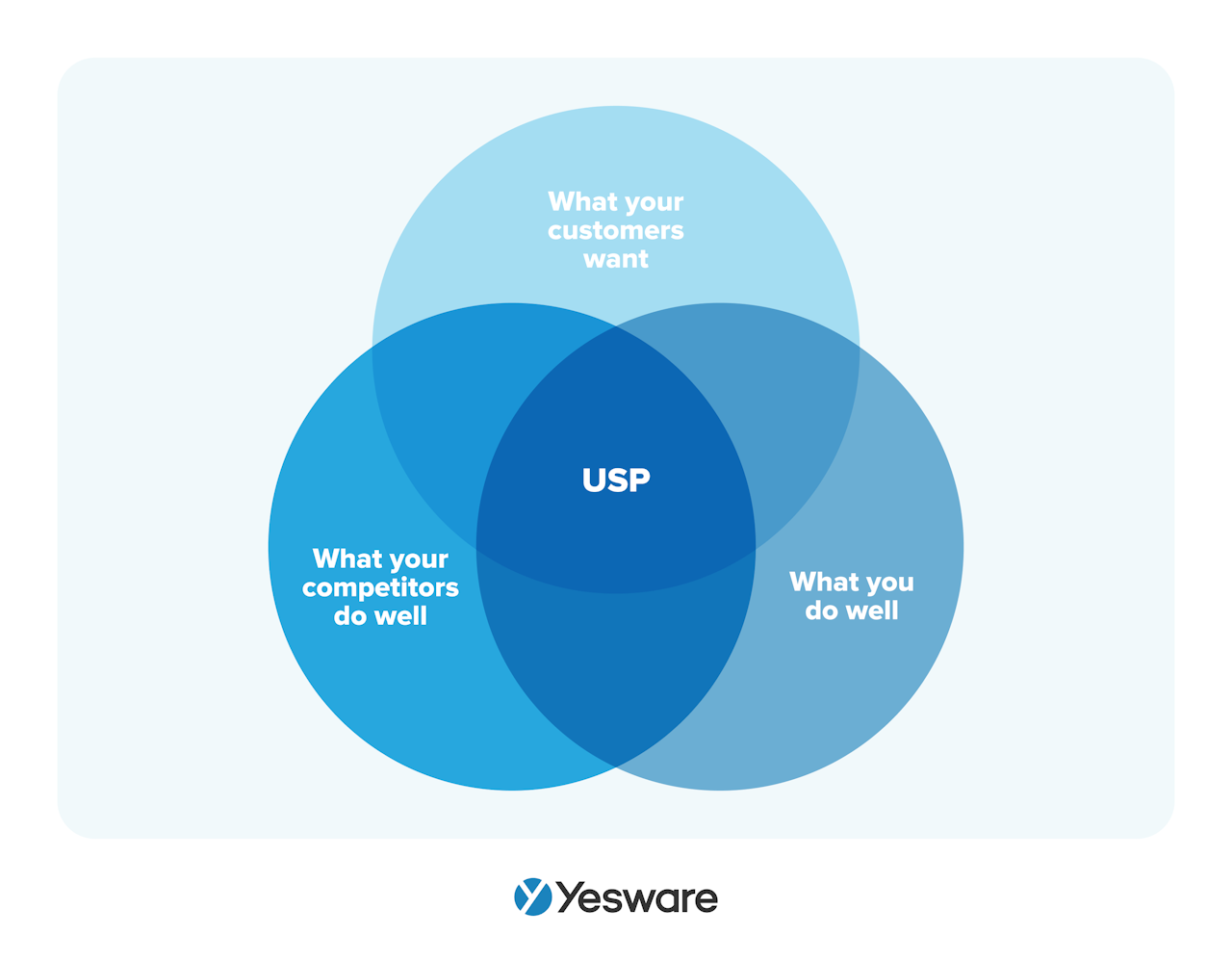 Use your pitch to position yourself as an expert, and your organization as a trusted leader in the market.
Use your pitch to position yourself as an expert, and your organization as a trusted leader in the market.
Use Data
Numbers are precise and definitive — sharing statistics and data during a sales pitch can give prospects something tangible to reference as they contemplate more about your offer.
Nail Your Next Steps
Remember, the point of a sales pitch is to get the prospect to agree to the next step in the process.
To that end, sales reps need to make sure that they know exactly what they plan to ask for after their pitch.
Whether you want a meeting, a demo, or simply an email address, make sure that you have your specific ask ready (along with any materials you need to make it easy for them to say yes).
Sales Pitch Template
Although every sales pitch is different, there are a few components that are common to just about everyone.
Use the following list to help you create a sales pitch template for your team.
- Introduction: Make friendly introductions and build rapport. Pay attention to the prospect’s body language, and adjust your approach accordingly.
- Problem/Pain Points: Many sales reps find it effective to start their pitch with a question, or with a surprise-factor statement relating to the prospect’s pain point. The idea is to get them feeling a bit unsettled at the beginning so that by the time you finish your pitch, they are relieved to hear about your solution. This is where you get to the heart of the “why” for the prospect.
- Value Statement/Value Proposition: As clearly and concisely as you can, explain your company’s value proposition and unique differentiators. The way you describe your USP should be action-driven and results-oriented. Avoid overly technical jargon or complex explanations.
- Proof Points/Customer Stories: Social proof is powerful enough that it should always be included in a sales pitch, no matter how limited your talk time is. Snippets from case studies, testimonials, and online reviews are all great resources that prove other customers trust you; internal data and success stories can also be very compelling.
- Closing Question/CTA: At the end of your pitch, it’s time to talk next steps. Some reps choose to end their pitch the same way it began: with an open-ended question. This can put the ball in the prospect’s court and help guide them into the next stage. If they don’t get there on their own, though, it’s up to you to be firm and make a direct call-to-action (i.e., Can we set up a demo for Thursday? How’s 2:00pm?).
Conclusion
Remember, it’s important to always connect the dots and put your prospect first.
These sales pitch examples use tactical strategies that are easily replicable but must be catered to your specific prospects.
This guide was updated on November 22, 2023.
Get sales tips and strategies delivered straight to your inbox.
Yesware will help you generate more sales right from your inbox. Try our Outlook add-on or Gmail Chrome extension for free, forever!
Related Articles
Casey O'Connor
Anya Vitko
Melissa Williams
Sales, deal management, and communication tips for your inbox
![15 Best Sales Pitch Examples [+ Tips and Templates]](/blog/_next/image/?url=https%3A%2F%2Fwww.yesware.com%2Fwp-content%2Fuploads%2F2023%2F11%2Fsales-pitch-examples-yesware.jpg&w=1984&q=75)
